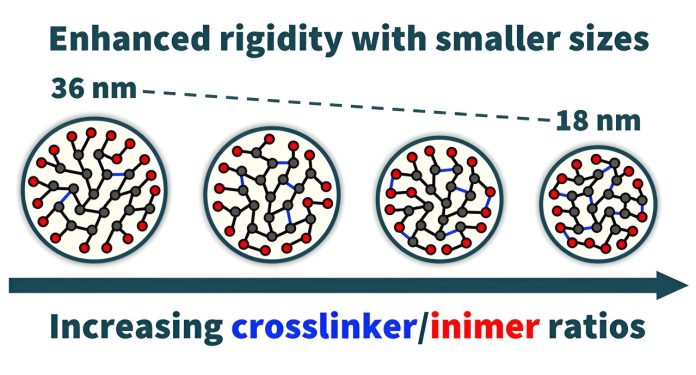
Nanoparticles are tiny particles that have many different uses, from delivering medicine to improving electronics and cleaning the air.
Because they are so small and can be customized, they are valuable for technological advancements and scientific research.
When polymers made from nanoparticles are combined, they can become even more functional.
Organic nanoparticles (oNPs) are particularly interesting because they are more versatile than inorganic nanoparticles.
This means they can be tailored for specific biomedical and technological uses.
However, until recently, the mechanical properties and chemical adaptability of existing materials were somewhat limited.
A recent study published in the journal Proceedings of the National Academy of Sciences (PNAS) has shown significant improvements in oNPs. The study focuses on a process called hyperbranching and chemical cross-linking, which creates a dense network of bonds in the nanoparticles.
This research was led by Krzysztof Matyjaszewski from the Chemistry Department and Michael Bockstaller from the Department of Materials Science and Engineering at Carnegie Mellon University.
Their work, supported by the Department of Energy Office for Basic Energy Sciences, also involved collaboration with researchers from the University of Houston and the Max Planck Institute for Polymer Research in Germany.
The results of this study demonstrate that it is possible to control both the functional properties and the elasticity of oNPs. This “bottom-up” approach to creating functional materials opens up possibilities for a wide range of applications. According to Bockstaller, “Through the combination of these processes, we have been able to demonstrate the capabilities of organic nanoparticles to exhibit inorganic-type stiffness.”
The advanced control over the structure and properties of these nanoparticles was made possible by a precise method for synthesizing functional nanoparticles using atom transfer radical polymerization (ATRP). This method was developed by chemistry doctoral student Rongguan Yin, the first author of the study.
Matyjaszewski explained, “The designed and precisely prepared by ATRP functionalized organic nanoparticles are, in fact, new gigantic single macromolecules with a molar mass reaching values of 100 million Daltons.”
An important feature of this new oNP system is its macroinitiator characteristics, which allow for versatile modifications. These brush-tethered oNPs can be used in innovative ways across various nanomaterial technologies through direct assembly or integration.
Bockstaller highlighted, “The incorporation of functionalities outlined in this work opens the door for organic nanoparticles to further improve optical properties in materials.”
Future research by the teams of Bockstaller and Matyjaszewski will build on this work to explore further functionalization opportunities, such as adding fluorescence to these new oNPs and measuring their performance in practical applications.
In summary, the development of these new organic nanoparticles represents a significant advancement in the field of nanotechnology.
By combining hyperbranching and chemical cross-linking, researchers have created versatile and highly functional materials. This opens up new possibilities for a wide range of applications, from improving electronics to advancing medical treatments.



